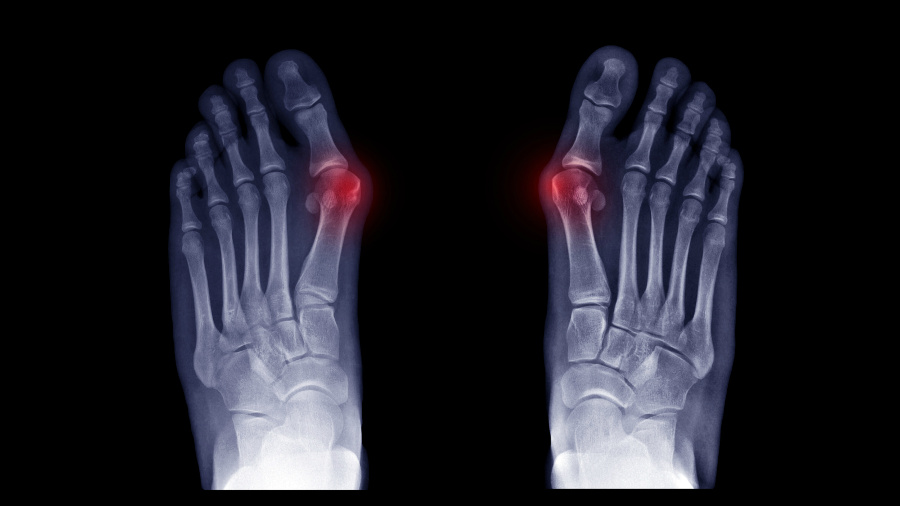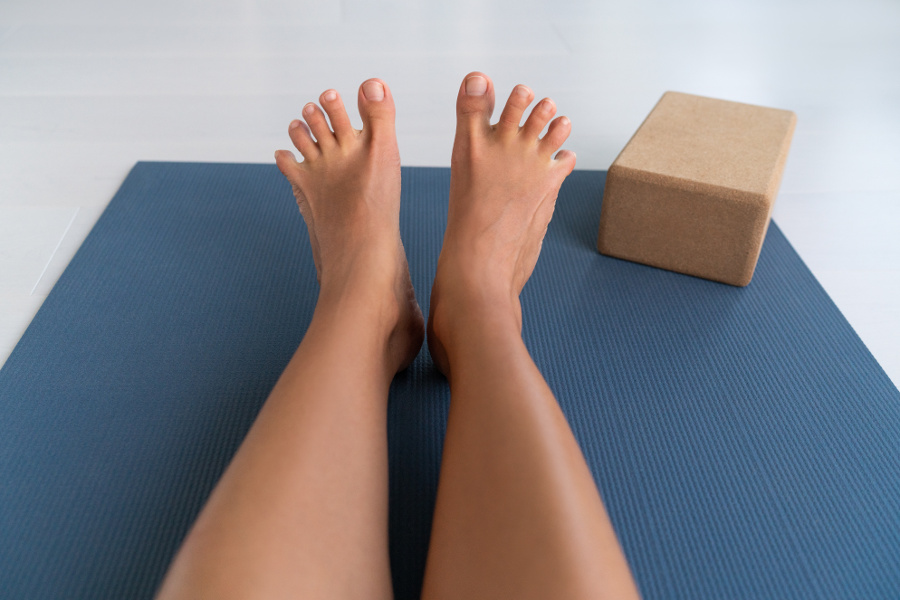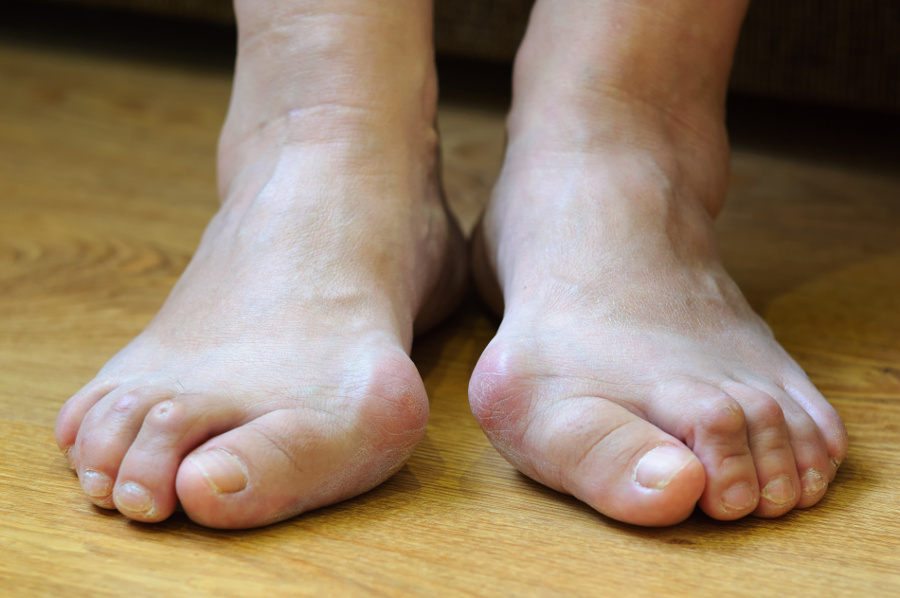Anyone who has a bunion, knows how uncomfortable they can be. But just exactly what is a bunion and how can we prevent them?
A bunion is a bony bump on the side of the joint of your big toe. They can become larger as we age, sticking out and becoming red and sore. They can cause the big toe to shift toward the second toe, even cause the second toe to ride up over the big toe. And they do not go away on their own.

While we think of the bump as the most obvious feature of bunions, there are significant underlying changes in bony alignment too. The big toe(hallux) starts drifting toward the 2nd toe(abduction). As it shifts that way it also starts to roll onto its side(valgus). The first metatarsal, (the bone in the foot that the toe joins to), is also drifting, in an inward direction, toward the midline of our body. The result is a gradual subluxation (a partial dislocation) of the joint. This is known in the functional anatomy world as Hallux Abductovalgus (HAV). The bump we call the bunion, is actually the end of the metatarsal bone, sticking out of the foot.
There are a number of reasons that may cause bunions to form. Scientific studies are providing us with a better understanding.
The strongest correlations are between HAV and tight footwear and HAV and overpronated feet.
Tight fitting shoes cause the big toe to be forced toward the second toe for the entire time we wear these ill-fitting shoes. Perhaps over several months or years, the toe gradually assumes that position. Hi heels shoes by itself have not been shown to cause bunions.
Over the last few years scientific research is strengthening the link between flat feet, overpronated feet and hallux abductovalgus. The majority of people with bunions and HAV are overpronators.
Being female is also a risk factor. We can speculate but have yet to fully understand why.
Genetics was assumed to play a significant role, but recent research has led us to be cautious about how significant it really is. It is possible that we inherit the foot problems of our parents or grandparents, their foot structure and/or biomechanical problems.
Trauma from a repetitive motion or position, like soccer or ballet may also be a factor as I see this commonly in my practice.
Diseases that cause destructive changes to the joint, like Rheumatoid Arthritis and Gout also cause the deformity.
Prevention is difficult but there are options to make you more comfortable. Choose roomy, comfy footwear and avoiding pointy toed shoes that could contribute to developing bunions.
There are also exercises you can do to strengthen the muscles within your foot. They all require a level of practice and commitment.
The first is the short-foot exercise. While keeping your heel on the ground, raise your toes off the ground and shorten your foot by drawing the front of your foot toward your heel. Do not curl your toes as you raise your arch. Hold this position for five seconds. Relax for five seconds and repeat.
Toe spreading exercise involves lifting your toes and spreading them. Once your toes are spread, hold for a count of five and relax. You can also try this with your heel and the front of your foot on the ground. Lift your toes off the ground and spread them, then bring your big toe down to the floor. Hold this position for five seconds. Relax for five seconds and repeat.

The modified heel raise technique involves standing with your feet shoulder width apart. Raise your arches while keeping your heels on the floor and your ankles slightly rolled out. Now raise your heels while putting pressure on the floor with your big toes. Hold this position for five seconds. Relax for five seconds and repeat.
Do all these exercises daily, in bare feet and until you are feeling muscle fatigue. You can start in a sitting position and progress to standing as your feet get stronger.
Depending on your level of discomfort, there are some inexpensive remedies like bunion cushions, toe separators or bunion socks and sleeves that help to shift the toe into a straighter position. Proper fitting footwear and custom foot orthotics are remarkably effective.
If your discomfort is fairly severe, a consult with an orthopaedic surgeon is a prudent step. And while surgical options are available, you will likely need foot orthotics and wide fitting footwear after surgery.
To summarize, wearing shoes with a tight toe box, being female and heredity are all factors. Flat overpronated feet is strongly correlated with HAV. Exercises, proper fitting footwear and orthotics are effective ways to mitigate the pain and improve function.
Consult your physician for a referral to our office. You can also call us directly and meet our Pedorthist for an assessment and discussion of the various treatment options.

